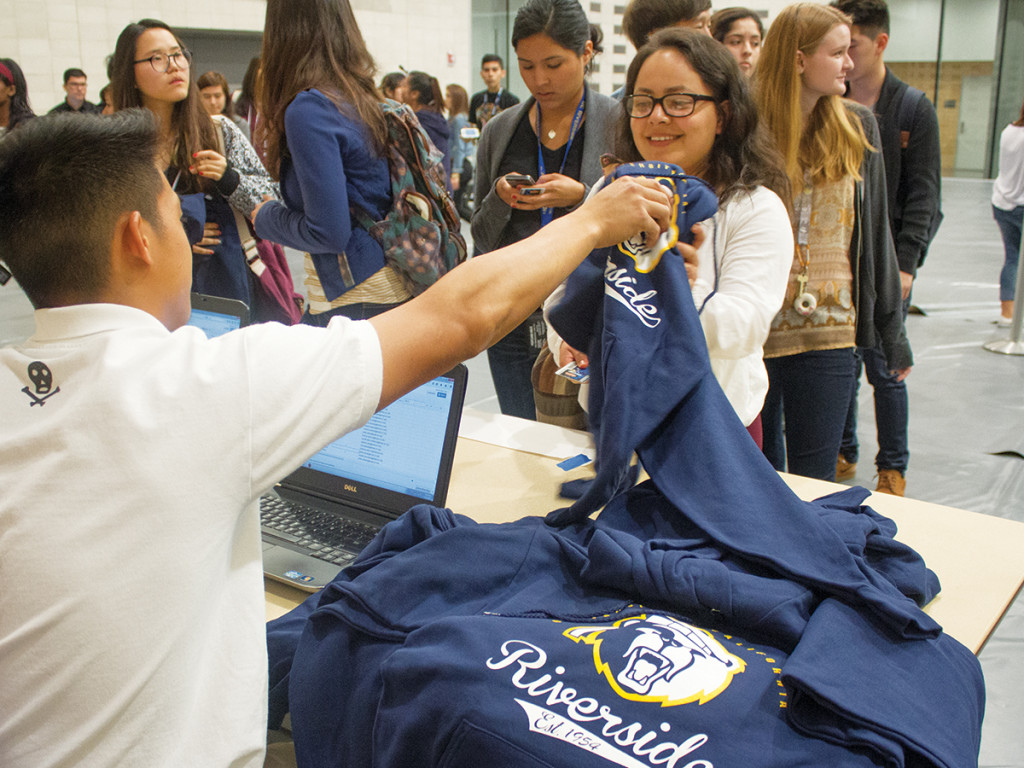
Despite controversies with the first R’Gear program, a reformed continuation has been in the works. Noticing a “lack of campus pride” as a first year, 2014-2015 ASUCR President Nafi Karim implemented R’Gear, hoping each sweater will “empower each incoming class.” Via the R’Gear program, students can receive a free sweater paid for by student fees in order to have a chance to display school spirit even if they can not afford school apparel. Though the program was favorably received by many students, especially first-years, issues in regards to organization, transparency and labor practices were later revealed. With this in mind, needed and welcomed changes were imposed on the second R’Gear program. However, concerns of the necessity of the program still remain.
At an ASUCR meeting in late October, Vice President of Finance Shafi Karim announced several changes toward the R’Gear program that tackle the issues of transparency and labor practices, as the program was approved during the same meeting.
One surprising turn, as the last R’Gear program came to a close, was the reveal of its total cost — a whopping $51,601.86. While an approximate disclosure of the total cost — $43,800 for about 6,000 sweatshirts to fit 30 percent of the 2014-2015 undergraduate population — was given, there was a large discrepancy of close to $10,000 between the approximate cost and the true cost. However, this was addressed as it was revealed that this year’s R’Gear program would only cost $30,728.88, which is $21,000 less than its previous year. This consideration to cost is vital as more funds can be allocated to other initiatives that can benefit all students. However, beyond being economically smart, stating this R’Gear’s true cost early on demonstrates consideration to students whose fees go toward funding this program. As current undergraduates pay more in tuition and fees than any other previous generation, we have the right to know and understand what our money is going toward, so seeing our student body speak plainly on its usage is both refreshing and necessary.
Beyond alleviating costs, it was made clear that the R’Gear sweatshirts will not be produced by sweatshop labor, as Shafi Karim announced he had received certification by the graphics company hired for the program. This action coincides with the ASUCR senate resolution that called in support of the Bangladesh Accord for Fire and Building Safety, a demand toward UCR and the entire UC system to cut ties to any clothing contracts that utilize sweatshop labor due to concerns that rose from the Rana Plaza factory collapse on April 24, 2013. Since R’Gear is meant to bolster school pride, it would be highly detrimental to said pride if students were to believe that their R’Gear sweaters were produced by impoverished workers who are underpaid.
However, no matter the changes that have been carried out on the R’Gear program, there is a question to be asked: is it necessary for this program to continue? Though the total cost has lowered to $30,728.88, that is still a grand sum that could be used on other initiatives that can affect a greater number of students’ more pressing needs (R’Pantry and R’Closet come to mind). Furthermore, can school spirit be truly encapsulated in a school sweater? It was stated that 89 percent of students supported the continuation of the R’Gear program, which can be understood as students believing that sweatshirts are a display of school spirit. However, think about it: many are going to agree on a program in which they receive freebies. It doesn’t necessarily mean that they agree with the sentiment placed on the object. A sweatshirt doesn’t necessarily instill a sense of purpose in students.
It’s understandable that uplifting students’ school spirit is a concern for our university’s student body, yet there are more pressing matters that should be focused on. It’s more understandable to use student fees to help them eat than to spend fees to get them a free sweatshirt.








